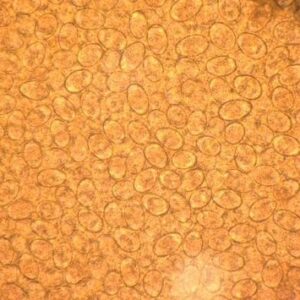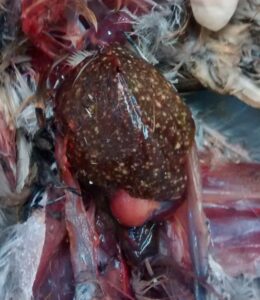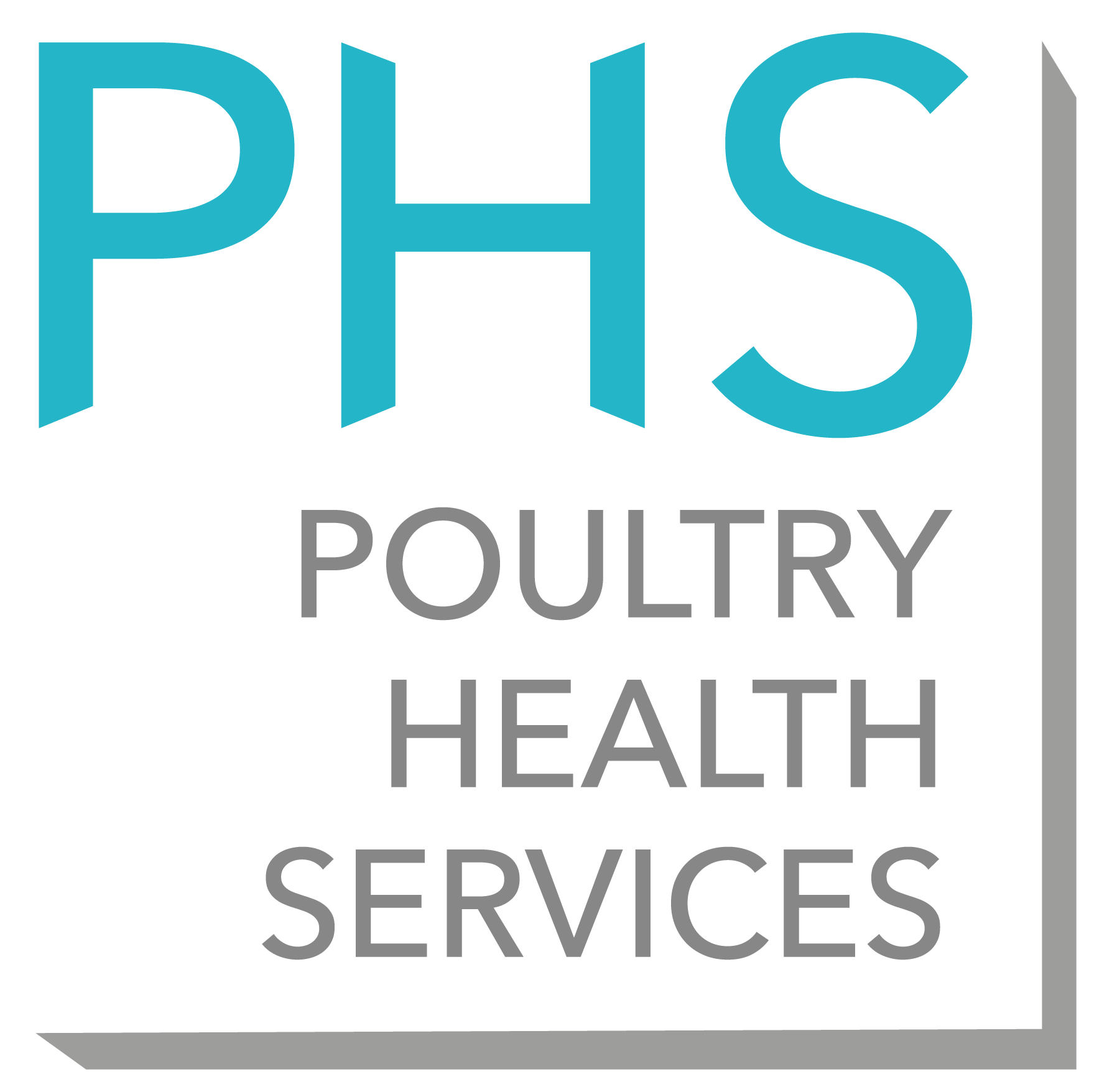Mortality
HEXAMITA & TRICHOMONAS
HEXAMITA & TRICHOMONAS
Hexamita
A motile protozoa otherwise known as ‘Spironucleus’. Found in the caecum and small intestine of pheasants and partridges.
Trichomonas spp.
A family of protozoa that resides in the caeca of many avian species.
Overgrowth of these motile protozoal species will cause disease in birds.
Symptoms
- Depressed with ruffled feathers.
- Weight loss.
- Weakness with eventual death. Mortality can be as high as 80% in birds younger than 10 weeks old.
Diagnostics
Identification of small oval undulating organisms from fresh intestinal scrapes under microscope.
Treatment
‘Emtryl’ was the only treatment available however it is now illegal to be in possession of this drug with intention to administer to gamebirds.
Birds lose many electrolytes through the diarrhoea process. Supportive therapy with electrolytes in the water is recommended to increase survival rates.
Antibiotic therapy has been used to help control this disease however the exact reason for this is under investigation.
Prevention
Ensure feed and water systems are contained, covered and hygienic.
Water sanitisation with a suitable product (hydrogen peroxide or chlorine) will reduce the likelihood of shared drinkers being a source of infection for hexamita or trichomonas.
Acidification of water has also been used with success for prevention and control of these diseases.
Overstocked pens are more severely affected due to a combination of increased social stress factors and increased incidence of disease exposure. Reduce stocking densities will help to reduce the severity of the disease in the flock.
Good biosecurity between different groups of birds; change of footwear and separate equipment between houses.
Rotate house positions/fields per batch of birds.
AVIAN INFLUENZA
AVIAN INFLUENZA
Avian Influenza is a highly contagious viral disease affecting the respiratory, digestive and/or nervous systems of many avian species. Avian Influenza is commonly spread by migrating birds and waterfowl. Waterfowl are resistant to disease and rarely show clinical signs when infected. Avian Influenza is shed by infected birds in their faeces and respiratory discharge and can also be spread via fomites, such as contaminated equipment, vehicles or people.
Symptoms
There are many strains of Avian Influenza which are divided into two types: highly pathogenic Avian Influenza (HPAI) and low pathogenic Avian Influenza (LPAI).
- HPAI causes severe disease with sudden mortality of up to 100%.
- LPAI can cause a range of symptoms, from mild respiratory disease, depression and a decrease in egg production. Birds infected with LPAI may not show any symptoms.
- Other symptoms may include swelling of the head, cyanosis (blue discolouration) of the comb and wattle, nervous signs, such as paralysis, and/or green diarrhoea.
Diagnosis
Diagnosis cannot be made on history, clinical signs or post-mortem alone. Blood sampling or virus isolation is required for a definitive diagnosis.
Treatment
There is no treatment for Avian Influenza.
As Avian Influenza is a notifiable disease, if you or your vet suspects Avian Influenza, this must be reported to the APHA, who will investigate the outbreak and conduct statutory testing and implement restrictions and control measures as necessary.
If a notifiable disease is confirmed, action will be taken on infected premises to reduce the risk of the disease spreading, including movement restrictions. Other actions, such as culling affected and susceptible birds, restrictions on premises the disease may have spread to and from (for example when animals have been moved), disinfection protocols and restrictions on activities such as shooting may also be implemented.
Prevention
Outbreaks usually occur following introduction by infected migrating or imported birds.
Biosecurity measures are the most effective protection against Avian Influenza. This includes cleaning and disinfection of equipment, vehicles and houses. Site-specific protective clothing and footwear and disinfectant foot dips are also useful biosecurity measures to prevent infection. Foot dips must be covered and regularly changed.
Preventing contact with wild birds is crucial to preventing Avian Influenza. Keepers of waterfowl should try to discourage contact with wild birds and wild waterfowl. The virus survives well in ponds and lakes.
COCCIDIOSIS
COCCIDIOSIS
Coccidia is a protozoal disease. Despite there being many different strains of this protozoa each individual one is very species specific. This means that pheasant coccidia strains will not infect partridges and vice versa.
PHEASANTS
Symptoms
Strains involved: E. colchici, E.duodenalis, E. megalostoma, E. pacifica, E. phasiani
- Diarrhoea
- Inappetence or anorexia
- Depression, ruffled feathers, hunching
- Poor weight gain
- Dehydration & death
PARTRIDGES
Red Legged partridge are more severely affected than grey partridge.
Symptoms
Strains involved: E. caucasica, E. procera, E. koifoidi, E. legionensis
- Diarrhoea
- Depression, ruffled feathers, hunching
- Poor weight gain
- Sudden death in red legged partridge

Diagnostics
Post-mortem: enteritis, watery intestinal contents, caecal cores.
Microscopy: intestinal scrapes inspected under the microscope to identify coccidial oocysts.
Faecal oocyst count: oocyst flotation from a pooled sample of faeces.

Treatment
Anticoccidial treatments:
Toltrazuril for two days (Baycox, Zorabel)
Amprolium for seven days (Coccibal, Amproline)
In severe cases, this may require concurrent antibiotic therapy to settle a bad dysbacteriosis.
Prevention
Coccidiostats in feed:
These products help birds to develop natural immunity to coccidia as they age. The drugs restrict coccidia metabolism so that only a low level is maintained in the birds. Therefore immunity is generated more swiftly without the catastrophic damage a clinical outbreak can have on bird growth and wellbeing.
However, in time the resident population of coccidia on a site will become resistant to the coccidiostat and will no longer have an effect. There is only one licensed coccidiostat drug for gamebirds, Lasolocid acid (Avatec).
Rotating paddocks/fields or where housing is placed. Coccidia is a very resilient parasite and will survive for over a year in soil and in housing. Turning the soil can also help.
Thorough cleaning and disinfection of housing with a product that specifies action against coccidial oocysts (as most products will have no effect):
Power wash all dirt and dust off equipment and housing.
Use a detergent to wash the remaining muck off, pay particular attention to gaps and hard to reach places.
Allow equipment to dry before applying the disinfectant.
Use a disinfectant to cover all equipment and housing and allow for contact time as advised on bottle, eg. Interkokask or Bi-OO-cyst.
CORONA NEPHROSIS
CORONA NEPHROSIS
During the summer of 1994, an outbreak of disease resulted in the rapid death of over 1000 breeding pheasants at a game farm with approximately 7000 birds. This was caused by a type of ‘coronavirus’ that is distinctly different from the respiratory coronavirus of birds known as ‘Infectious Bronchitis’.
Clinical Signs
All birds are susceptible, but the most severely affected are young birds. However, the majority of cases are seen in breeder birds.
- ACUTE symptoms: sudden mortality (as high as 50%), decreased food intake and white diarrhoea.
- CHRONIC symptoms: sneezing, decreased egg production and reduced hatchability.
Diagnostics
Post mortem examination will show;
pale, swollen kidneys
visceral gout may be seen in some birds
PCR on affected tissue/ respiratory tract will determine infection.
Treatment
Targeted antibiotic therapy using culture and sensitivity may help control secondary infections but will not help birds recover from the virus itself.
Supportive electrolytes through the water will help birds keep rehydrated and so have a greater chance at recovery.
Prevention and Control
Routine cleaning and disinfection; The virus can be easily destroyed by heat, lipid solvents, nonionic detergents, formaldehyde, oxidizing agents and UV irradiation. 1% solution of formalin & 0.5% peracetic acid seems to be effective.
Vaccination either in the water or by eye-drop. The vaccines available are designed for use in chickens so are used off license.
Biosecurity between houses; footdips, changes of clothing/ footwear will help reduce spread between different groups of birds as the virus spreads by airway secretions and faecal contact.
Optimising the birds environment will help reduce spread and decrease stress;
- Reducing stocking densities (specifically assess the male:female ratio in breeder pens).
- Ensuring birds have adequate access to food and a clean water supply (including sanitisation – ie. hydrogen peroxide, chlorine etc).
- Ventilation; Controlling ammonia levels within the housing.
- Using appropriate shed temperatures
- Looking for and controlling any pre-existing diseases; like Coccidiosis
BLACKHEAD/ TETRA-TRICHOMONAS
BLACKHEAD/ TETRA-TRICHOMONAS
Blackhead
Blackhead or Histomoniasis is an important disease that affects turkeys, chickens, and gamebirds such as partridges, pheasants, and quail. The disease is called blackhead after cases in turkeys where infected birds developed a characteristic black head. However, it is very rare to see this symptom. Blackhead is a complex disease caused by the protozoan parasite Histomonas (H.) meleagridis, which are spread to the bird by the caecal roundworm Heterakis (H.) gallinarum.
Symptoms
- Depressed, listless and hunched, with drooping wings and ruffled feathers. It is very rare to see any black or purple colouring of the head.
- Droppings are commonly foamy or frothy and yellow or sulphur-coloured.
- High levels of sudden mortality are common as young birds become sick quickly and usually die within a few days of signs appearing. The disease develops more slowly in older birds and they often become emaciated and may eventually die.
Diagnosis
The post-mortem signs are very distinct and therefore blackhead can be diagnosed visually.
Liver and caeca samples may be submitted for histopathology for an official confirmation of protozoa presence.

Classical blackhead liver lesions.
Treatment
Historically, the disease was controlled and treated by the administration of dimetridazole (Emtryl) in feed and drinking water. This drug has been withdrawn from use and its use in gamebirds and poultry is now illegal.
Currently there are no licensed treatments for blackhead in gamebirds or other poultry species.
All treatments are aimed at preventing secondary bacterial infections.
In water supplements will help;
Electrolytes
Oregano and essential oil based products
However once mortality has started the prognosis is poor.
The antibiotic ‘paromomycin’ has been used to prevent the spread of blackhead, but application after infection has not been shown to reduce the number of losses.
Prevention
Birds are infected when they eat feed, earthworms or droppings that are contaminated with the protozoa or Heterakisworm eggs that contain the protozoa meleagridis. Routine worming is important in preventing blackhead.
Maintain good biosecurity:
Protective clothing and changing footwear between groups.
Utilising covered disinfectant foot dips that are changed regularly.
Thorough cleaning and disinfection of housing and equipment.
Ensure the birds are on clean, dry bedding.
Tetratrichomonas
Tetratrichomonas (T.) gallinarum is a protozoan parasite of gamebirds and poultry. It is being seen more frequently in gamebirds, particularly in partridges. Protozoa are very small, single-celled parasites that contribute to a number of diseases in gamebirds, including coccidiosis, blackhead (Histomoniasis), Hexamita (Spironucleus) and intestinal Trichomonas. Tetratrichomonas is a very similar disease to Blackhead and mixed infections of both protozoa are possible. Tetratrichomonas and blackhead both have similar symptoms, limited treatment options and generally poor outcomes.
Symptoms
Symptoms are similar to blackhead.
- Depressed, listless and hunched, with drooping wings and ruffled feathers.
- Droppings are commonly foamy or frothy and yellow or sulphur-coloured.
- High levels of sudden mortality are common and may be the only symptom.
Diagnosis
Tetratrichomonas is usually diagnosed on post-mortem examination.
Liver and caeca samples for histopathological examination.
Treatment
Currently there are no licensed treatments for Tetratrichomonas in gamebirds or other poultry species. All treatments are aimed at preventing secondary bacterial infections. However, it is very difficult to prevent high mortality once symptoms have appeared.
Supportive treatments, such as electrolytes and supplements with essential oils, may reduce mortality and improve outcomes.
Prevention
As for blackhead.
SALMONELLA
SALMONELLA
This disease is zoonotic – this means it can cause disease in people.
Should you experience any vomiting, diarrhoea or abdominal pain please contact your local GP.
Symptoms
There are many different types of salmonella, with the most common in pigeons being Salmonella Typhimurium.
Healthy birds can carry this bacterium and shed it intermittently in their droppings.
Affects all ages of bird.
- Decreased appetite.
- Green diarrhoea.
- Increased loft mortality.
- Weight loss.
- Reduced reproductive performance/increased ‘dead in shells’.
- Swollen joints, lameness, drooped wings and difficulty flying.
- Loss of balance, circling and reluctance to move.
- Increased number of dead in shells.
Diagnostics
Three to five days pooled faecal sample for salmonella culture.
As the bacteria is shed intermittently by the birds then samples are sometimes required to be submitted on multiple weeks.
Cull or dead bird submitted for post-mortem.
Treatment
Treat according to culture and sensitivity.
Prevention
Regular cleaning and disinfection of the whole loft.
Avoid stress in the birds (overcrowding, other disease).
Vaccination is also available, but is unlicensed in pigeons.
ROTAVIRUS
ROTAVIRUS
Affects mainly young birds.
Symptoms
- Diarrhoea/ green faeces.
- Hunched, dropped wings, low tail fluffed up birds.
- Decreased feed intake.
- May be collapsed, struggling to breath closely before death.
- Last for around five to seven days.
- On post-mortem: birds may have an enlarged spleen and hepatic necrosis (pale, friable liver), with little else of note.
Diagnostics
Taking cloacal swabs for PCR will show if the virus is still actively being shed by the bird.
Treatment
As it is a virus there is no treatment available.
Mortality in the loft can be up to 30%.
Treat any secondary gut diseases to improve likelihood of bird survival, such as parasite or bacterial infections.
Prevention
Isolating incoming birds for at least 14 days. The virus will cause disease in the birds three to seven days after first infection.
Infected birds that do not die or may not show any symptoms can become carriers of the disease for three to six months after initial infection and spread it to naïve birds. If continual reinfection of the loft keeps occurring isolate or euthanise these birds.
The virus is not very hardy and most common disinfectants will kill it. It survives in the environment for up to three weeks. Ensure to thoroughly clean all living areas.
Its main route of spread between lofts is during the race environment, however feral pigeons have been shown to play a part.
There is no vaccine available currently in the UK, but it is in research elsewhere.
STARVE OUTS
STARVE OUTS
Chicks can fail to ingest feed and water resulting in starvation, dehydration and death.
Symptoms
- Mortality peaks at three to five days when the yolk sac reserves have been depleted.
- Birds are small and non-thriving and may eat litter.
Causes
Weak or poor chicks that fail to find feed and/or water.
Environmental causes:
Too few or unsuitable feeders/drinkers.
Inappropriate feed or feed size.
Poor water quality.
The light in the environment is too dark, making it difficult for the chicks to locate the feeders and drinkers.
Suboptimal environmental temperature resulting in the birds chilling or overheating.
Diagnosis
Visual inspection at post-mortem examination
Dead or cull birds will have empty crops and gizzards. Sometimes they will have eaten the litter.
Often the birds will be small and underweight.
Prevention
Feed and water availbility; Ensure there are an adequate number of feeders and drinkers and that they are accessible and of an appropriate height for the birds using them.
Feed Quality; Ensure that the feed provided is the correct formulation and size for the age and type of bird and that the feeders are clean before placing feed.
Provide clean, fresh water. If using automatic drinkers, ask your vet for a water sample kit and test the water quality after cleaning and disinfecting prior to placement to ensure the water is of a good quality for the birds. Ensure all drinkers are clean prior to use.
Ensure the lighting is bright enough to allow the chicks to easily find the feeders and drinkers.
Ensure both floor and air temperatures are optimal at placement. The floor temperature should be between 29oC and 31oC, and the air temperature between 33oC and 34oC.
Ensure adequate, good quality, dry clean litter is placed that is free from moulds and fungal spores.
